Last weekend, Scott, Cat and I got on a boat for the first time in over two years to see Whales!! We did a three day trip to Monterey, CA for a visit to the Monterey Bay Aquarium (you can read about that here) had some lovely downtime and went whale watching!
We had an amazing time with the Monterey Bay Whale Watch We’ve been out with them several times and it’s always a good trip, even early in the season. This time? Was AMAZING. July and August are prime season for Humpbacks and Blues in Monterey Bay. I’ve honestly never seen this many whales on one trip except when I was paying to be a research intern in Hawaii a million years ago. It was absolutely amazing. According the MBWW’s Facebook page in all we saw two blue whales (and heard about another that I don’t think I actually saw), 12 humpback whales, 200 Risso’s dolphins, 300 Pacific White-sided dolphins, and an unspecified number of birds and Sea Lions.
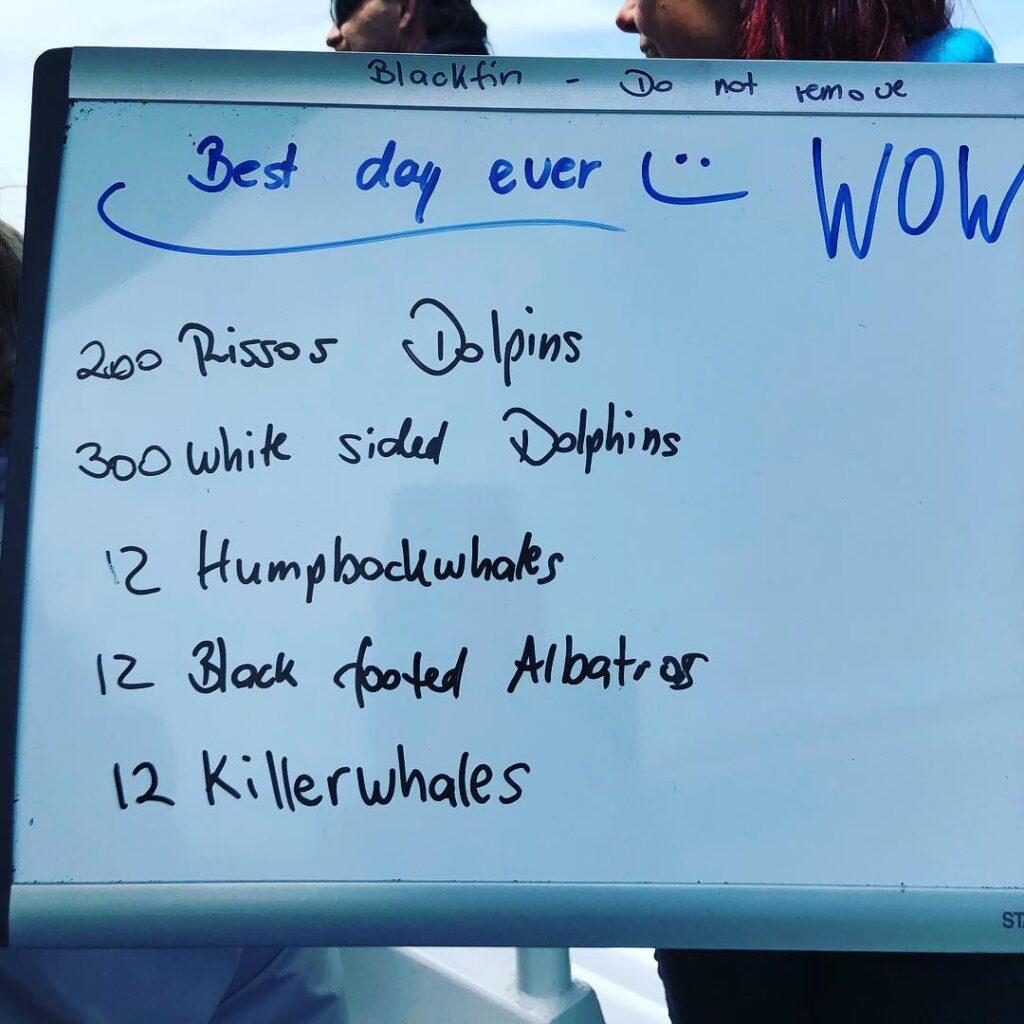
We got to see our first whale about 45 minutes out from the dock, a lovely Humpback who was kind enough to show their fluke. The marks on the underside of a Humpback’s tail flukes are as distinctive as a human finger print and researchers have been cataloging these ID photos for several decades now. There’s a website call Happy Whale that’s crowd sourcing data. Anyone can post whale photos there, and with all the digital info attached to photos now, and info added by the poster, they can track and collate data for the whale in question. I uploaded both of the ID photos I got and am waiting to hear what tag and/or nickname is associated with it

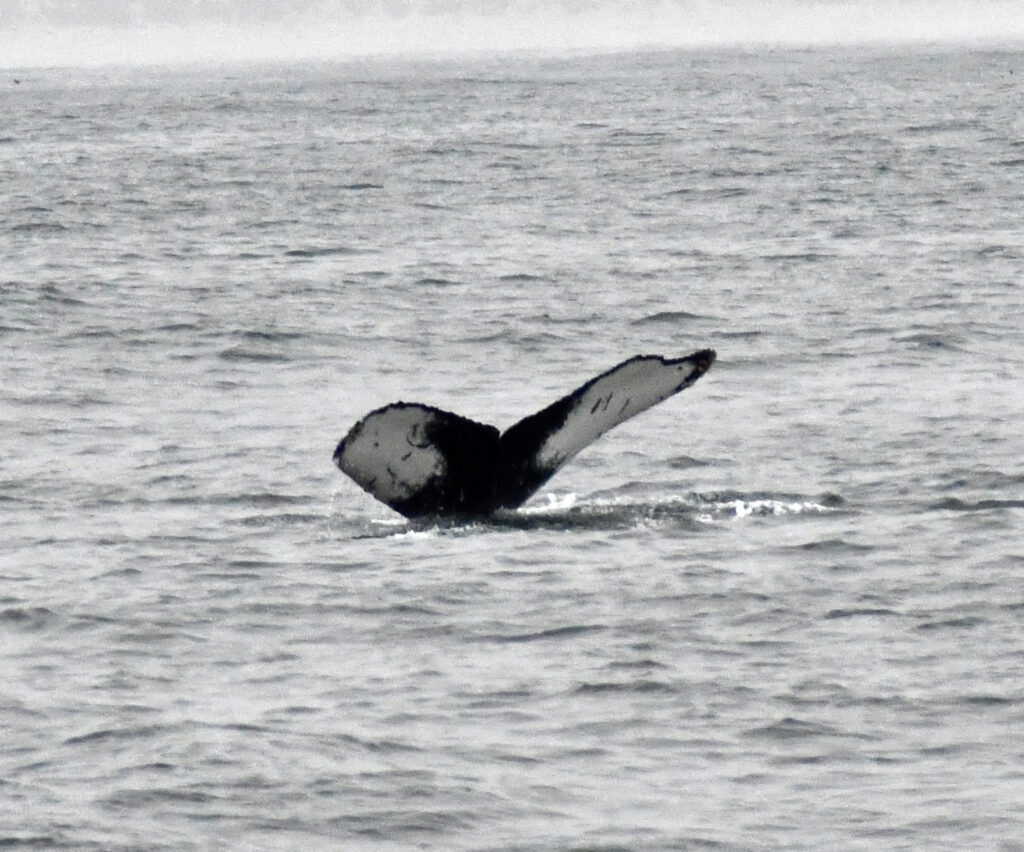

I think this first whale was on its own, just hanging at the surface, breathing, then diving for snacks. Generally Humpbacks wait until they are going to do a full dive to lift their tails out of the water. So if you see the underside of the tail fluke, you know they are going down for a bit. Depending on the whale and the food around them, they might also swim off while they are under, so can be a guessing game as to when/where and how long the whales going to dive/come up/dive again.
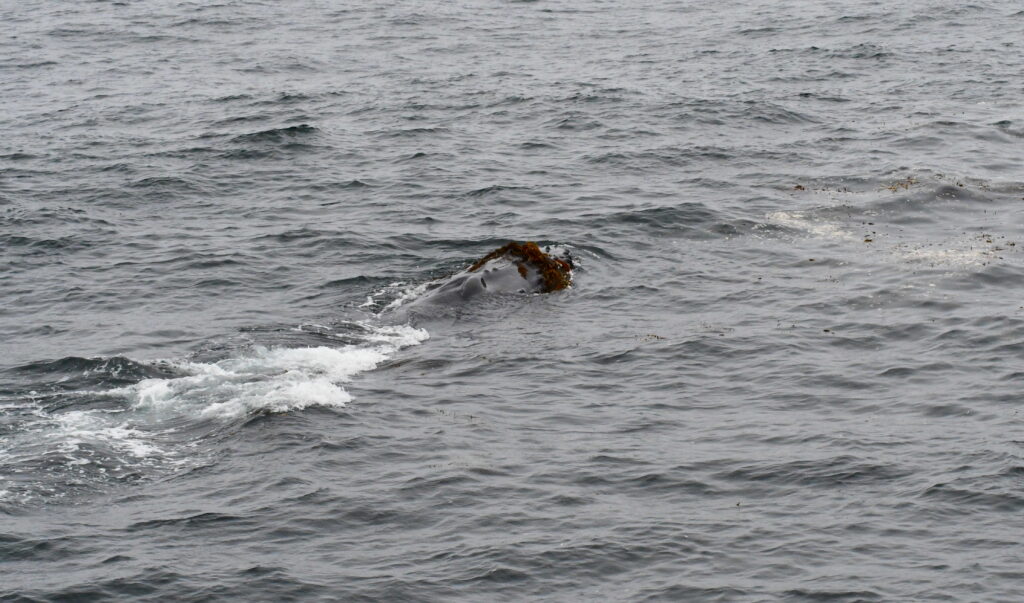


While we were moving on to another location we saw a pod of Dall’s porpoises (I have very blurry shots of them). And not long after we came across a mixed pod of Risso’s dolphins and Pacific White-sided dolphins hunting together. Our naturalist, Greg, said this was unusual as the two usually eat very different foods. It was super cool to watch. The Pacific White-sided are a bit smaller than the Risso’s, with a swath of white along their sides on an otherwise dark body. Their dorsal fins are a little smaller than the Risso’s as well. The Risso’s are mostly gray with a more rounded head than people tend to think of with dolphins, since most people think Bottle Nose / Flipper when they hear ‘dolphin’. There was a lot of leaping and porpoising involved between both groups and was great fun to watch.
While we were watching the dolphins word came from the other boat MBWW had out that they were watching a pair of Blue whales about 25 minutes away from where we were. When asked, the majority of folks on the boat wanted to see Blue whales, so off we went.
Blue whales are very different from Humpbacks. Humpbacks seem genuinely interested in the goings on of humans. They are well know for inspecting boats, hanging out around boats, and doing displays in sight of boats. You might say they are showoffs. They are certainly more extroverted than many other whales. They are also easier to id from a boat than Blue and Grays. They have nobs on the top of their head and a hump at the front of heir dorsal fin, which gives them their common name. Their latin name comes from they very long pectoral fins: Megaptera noveangliae which means great wing of New England. (I might have a crush on them) Humpbacks currently average around 45-50 feet in length and can weigh around 45 tons. They are also found in all around the world, which is probably another reason why so many people have seen them. And they sing. All whales have calls and communication, they folks build complex songs that change from year to year and population to population.
Blue whales by contrast have a very smooth body and sleek line. They’re technically blue-gray with light / pale blue mottling on their very long backs. They have a teeny dorsal fin and, as I found out on this trip, rarely show the underside of the tail flukes. If Humpbacks are the extroverts, Blues are the introverts. Averaging 85+ feet, hey are the largest animal alive on earth. Turns out, a large population of Blues hangs out in and around Monterey Bay!

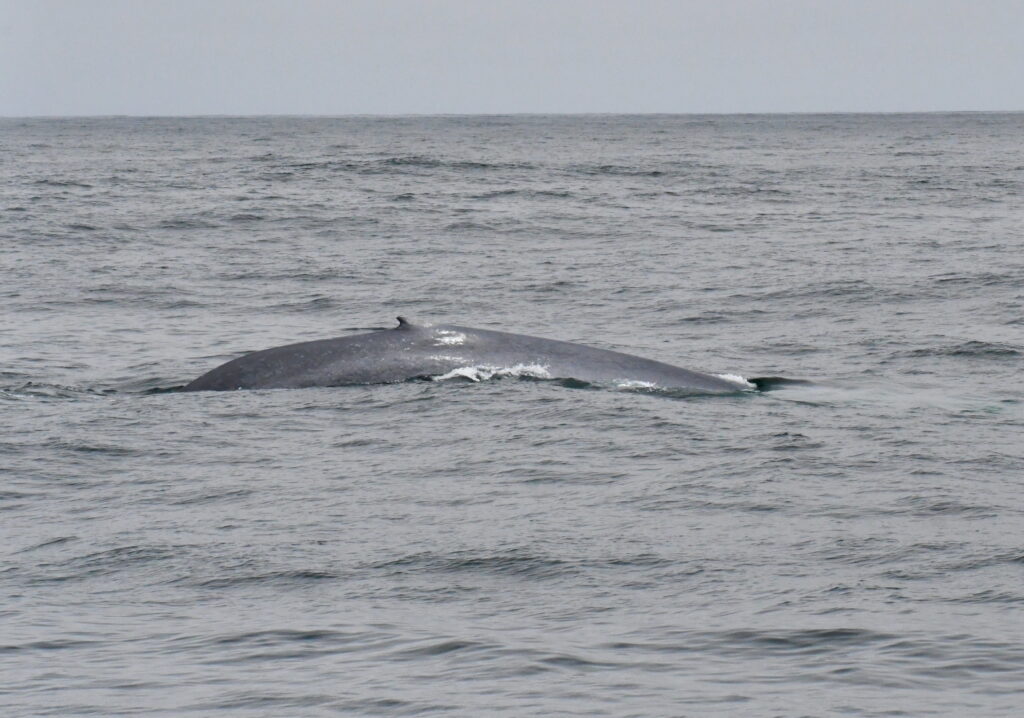
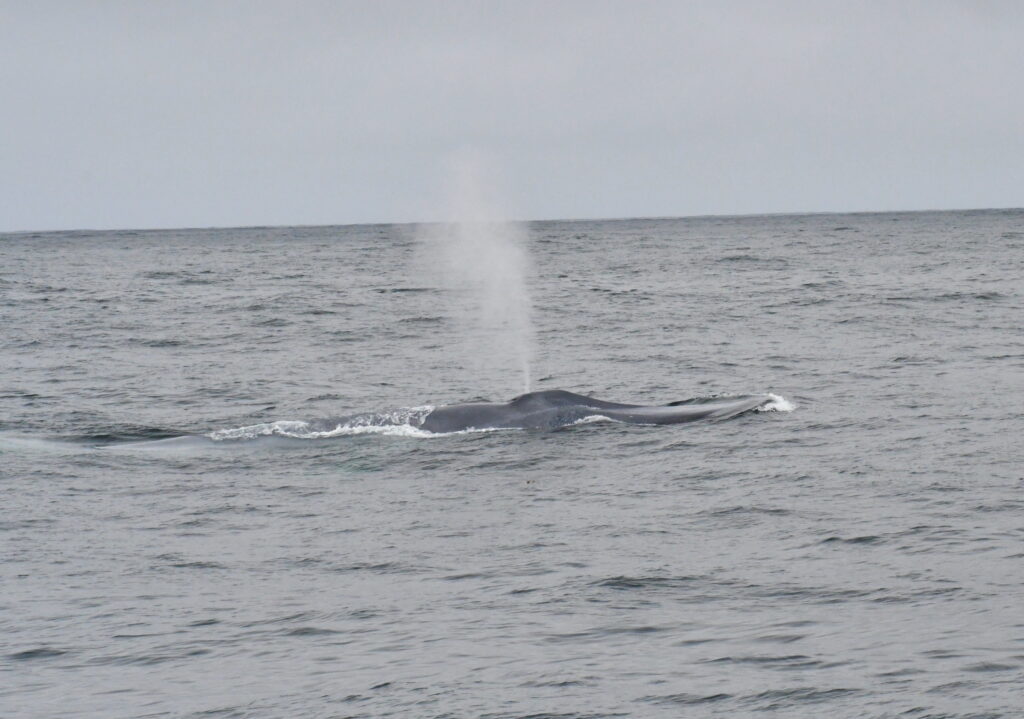
While I’m geeking out, did you know that both Humpbacks and Blues are Baleen whales? [1] They are called this because of the baleen plates in their jaws that we used to use for “whale bone” in corsets. They use them to filter out water while keeping in the fish and krill they scooped up. There are also both Rorqual whales because they have rorquals, or furrows, running from their chins to below their pectoral fins. The rorquals stretch out as the whales fill their mouths with water and small fish or krill, giving the room to store the water until they press it out through the baleen plates. On this trip, I got to see a piece of baleen from a Right Whale. Out of the water they are dry and ridged and feel a bit like thin, dry, soft wood with a fringed end.
When we arrived at the location of the Blue whales, we learned that they had been id’d as a mother and calf pair that have been seen in the Bay since at least last week. A licensed drone operator who works with MBWW was able to confirm the two and spot a third Blue in the area. The mother and calf were surfacing at irregular intervals so I never saw two at once and I have no idea which of the two I was photographing when, or even if I ended up photographing the third one. Doesn’t mater it was an absolute treat to see them!
Eventually we handed off the good Blue whale vantage point to another boat and started back for shore. And ran right into a group of Humpbacks cooperatively feeding with a group of Sea lions. This was amazing and gave us some of the coolest views of Humpbacks of the trip. Cooperative feeding is exactly what it sounds like, the Humpbacks and Sea lions work together to corral their meal – probably sardines that day, while sea birds wait at the surface for everyone to swim up. It’s wild to watch. The birds give you the first clue, as they lift off and out of the way, circle as the Sea lions come up, and then dive for the stunned fish the whales don’t eat.
At one point one of the whales decided to get a better look at their surroundings and did a Spy Hop, coming up vertically through the water to get their eyes into the air. So cool! Looking at my photos later I realized I caught the whale’s pectoral fin as it swept around and came a bit out of the water!
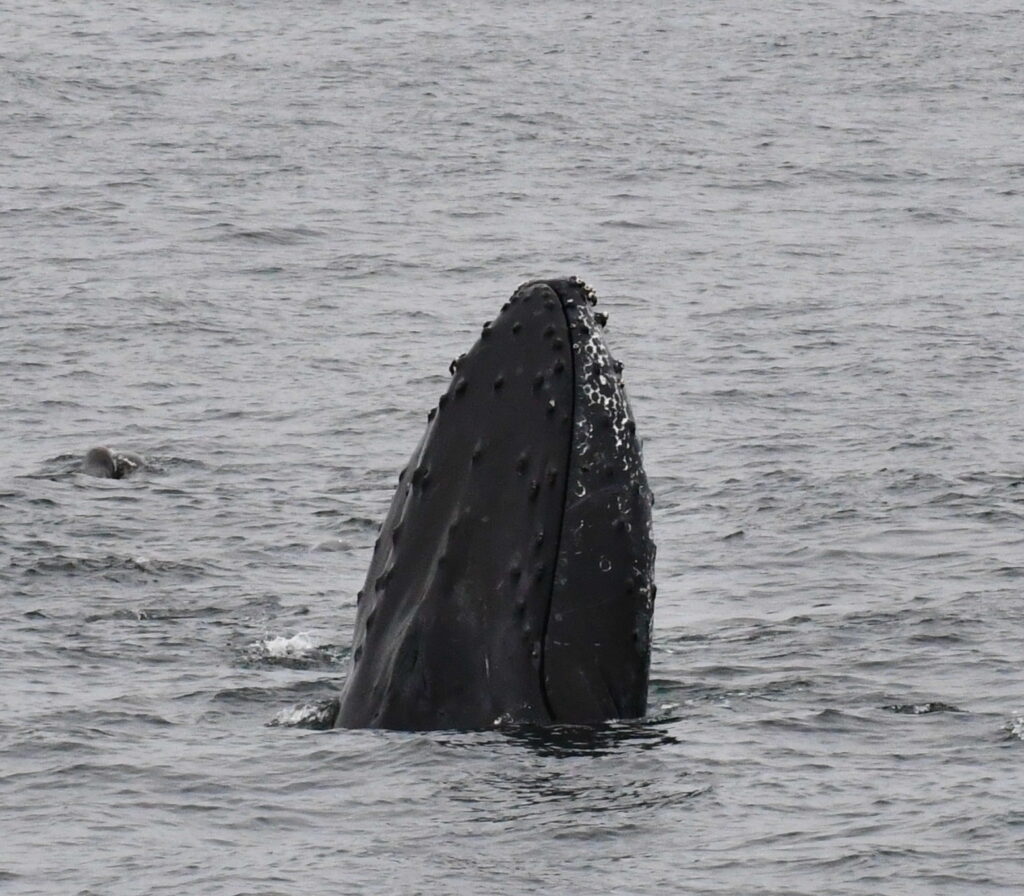
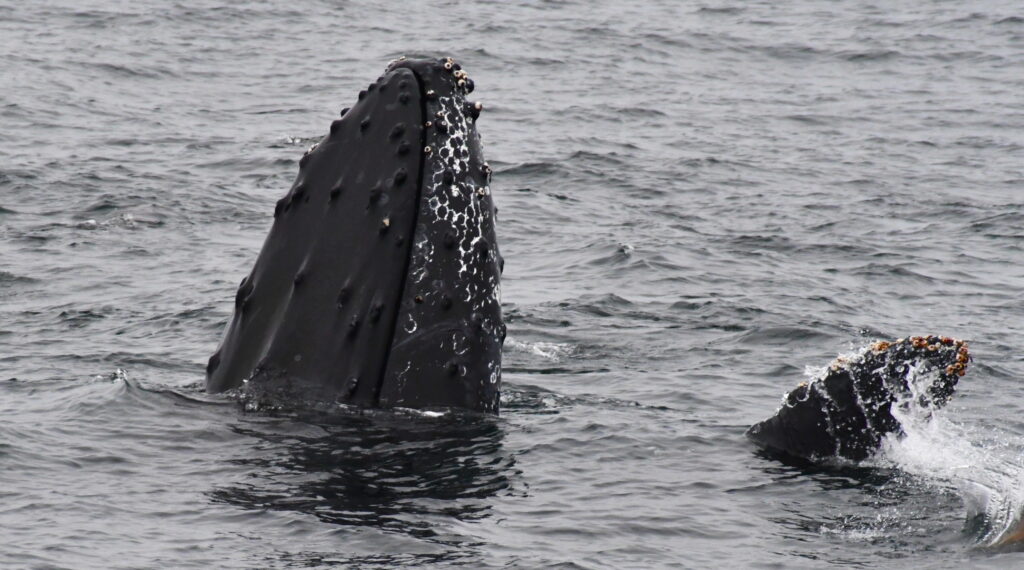
On the way back to port, with the sun out at last, I was able to get a nice shot of the bay side of the Monterey Bay Aquarium as well as photos of the cormorant nesting area and the Sea lions that like to haul up on to the rocks with them. We even saw an otter around the boats at the docks. I didn’t see it, but someone said they saw a baby with her!
It was an amazing trip. It was soooo good to be back on the water, back visiting the whales.
The MBWW photographer, Daniel Bianchetta’s photos of the same trip: FB Link
Notes:
[1] As I was reviewing this before uploading it to the shiny new website, I had to grin at my enthusiasm 🙂 Little did I know I was starting on a journey that would lead to a newsletter, this website, and a plan to go back to school for Science! Amazing what following your heart can create.
